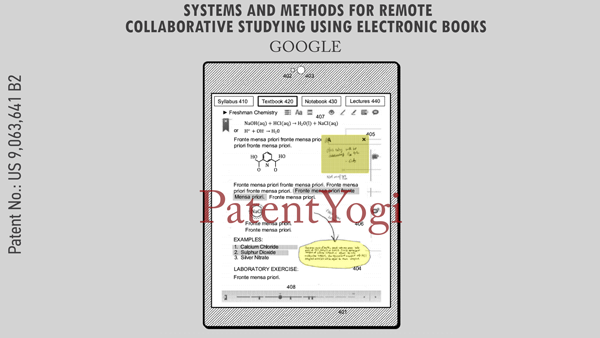Although some attempts have been made to transform study material from Gutenberg’s era to the digital era, some of the advantages of using paper books for study purposes have not been replicated. Students from time immemorial have used their texts in different ways. Some highlight portions of particular interest; others place notes in the margins to keep track of clarifications of difficult concepts. Some used textbooks are more useful than new ones because they naturally fall open to the most important pages after repeated use, or because particularly important pages or sections are more dog-eared than others. Electronic reading devices have not to date provided interfaces to implement some of these subtle yet important features that help students learn from their texts most efficiently.
Google patented an electronic book reader that includes input recognition, annotation, and collaboration subsystems. Improved interaction methods provide more intuitive use of electronic books for studying. The provided annotation functionality allows a reader (e.g. a student) to make notes as is common with conventional paper books. The collaboration subsystem provides functionality to share these notes with others, enabling group learning on a variety of scales, from small study groups to collaborations with worldwide scope.
Patent Number : 9,063,641
Patent Title : Systems and methods for remote collaborative studying using electronic books
Inventors : Patterson; James (San Francisco, CA), Moody; Nathan (San Francisco, CA), Dougall; Scott (Burbank, CA)
Assignee : Google Inc. (Mountain View, CA)
Family ID : 1000001172238
Appl. No. : 13/182,797
Filed: July 14, 2011
Abstract
An electronic book system provides interfaces particularly suited to students’ use of textbooks. A finger press on a touch screen produces a contextual menu with user choices that relate to where the finger was pressed or what the user was recently doing with the book. A student provisionally navigates through a book by a specific gesture which, when it stops, returns the user to the previous position in the book. Annotations are displayed and hidden using specific gestures and through selective movement of the reader as sensed by its accelerometer.


